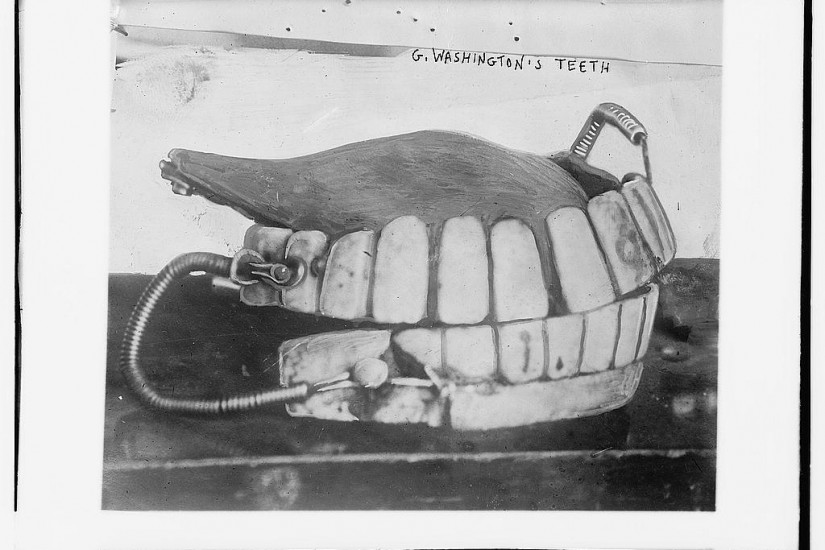George Washington’s Mount Vernon, the historic plantation occupied by the country’s first president, recently stopped selling its popular souvenir replica magnet of Washington’s dentures because of renewed attention to the human teeth in the original.
Some of the teeth might have been Washington’s own pulled teeth. Others came from ivory and the teeth of cow, horse, and hippopotamus. Still others may have come from enslaved people.
We know a surprising amount about the dental history of the nation’s first president. George Washington’s teeth were ravaged by disease and primitive dental care. His first tooth was pulled when he was in his mid-twenties. By the time he was sworn in as president, at the age of fifty-seven, he had one tooth left. That soon got yanked out, too. His dentist, John Greenwood, preserved Washington’s last tooth in a gold locket he wore on his watch fob.
Washington wore dentures throughout his entire presidency. Contrary to myth, they were not made of wood; they were technological marvels of their day, crafted of lead, brass, gold, and steel springs. The combination of human and animal teeth in the contraption was not uncommon. As art historian Jennifer Van Horn explains:
As grisly as the use of human teeth in dentures seems to our modern sensibilities, dentists deemed them to be “at all times preferable where they can be had.” Human teeth were difficult to attain, however, and in practice dentists blended teeth from mammals of vastly different sizes.
Using the teeth of enslaved people also wasn’t unusual, at least in the very small percentage of people who wore dentures. “The general would certainly not have been alone as a white southerner with African Americans’ teeth in his mouth,” writes Van Horn.
